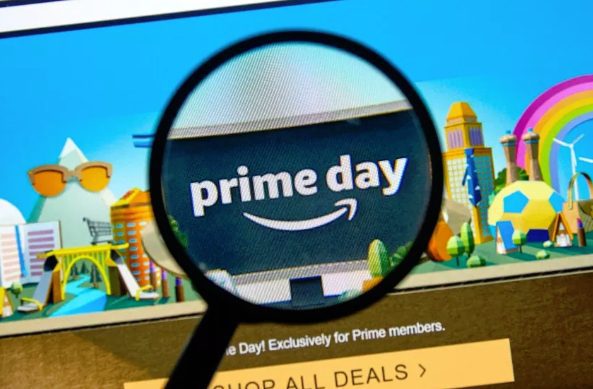Back-to-school shopping had historically dominated the retail conversation for the entire summer, and sometimes well into the fall. But the rise of Prime Day in recent years arguably has changed the definition of the season, affecting how early shoppers consider buying school supplies, clothing and electronics. To take just one example, last year’s $4.2 billion Prime Day haul almost certainly included a portion of the overall $82.8 billion estimated spent on K-12 and college students. The event’s popularity and its strong growth pattern suggests that Prime Day will attract even more of the back-to-school spending pie in 2019.
Consumer trends appear to support retailers’ move to treat back-to-school and Prime Day as a combined event:
- 55% of back-to-school and college shoppers say they plan their shopping around sale events such as Prime Day, July 4th and Labor Day, according to National Retail Federation data;
- 63% of parents start their back-to-school shopping in July or earlier, and they plan to spend an average of $507 during the season, up from $465 in 2018, according to a RetailMeNot study; and
- 51% of consumers report shopping for themselves while picking up back-to-school items, giving retailers plenty of incentive to start (or continue) cross-promoting back-to-school offers with potential Prime Day promotions, the RetailMeNot study said.
Another way retailers are conflating BTS/Prime Day with the holiday season is their approach to discounting: July 2018 had a greater share of products on sale (20%) than either November (19%) or December (18%) that year, according to research from Episerver. However, several industry experts worry that discounting will have the same negative effect in the summer as it does during the colder months: shrinking margins and training shoppers to hunt down the lowest prices.
250 Retailers Prep For Prime Day Deals As ‘Prime’ Label Boosts Conversions
With Amazon extending Prime Day from 36 hours to 48 hours in 2019, the usual suspects — including Walmart, Target and eBay — all have launched promotional days/events of their own that coincide with the July 15-16 timeframe.
As many as 75% of shoppers are at least considering shopping during Prime Day, and of those shoppers, 68% said they will be looking outside Amazon to comparison shop on their sites, according to an Adlucent report on Prime Day. Outside of Amazon, consumers’ top “Black Friday in July” destinations include:
- Walmart (44%);
- Target (40%);
- Best Buy (24%); and
- Macy’s (18%).
Beyond these big names, many other retailers are realizing that Prime Day is a major factor in driving overall back-to-school sales. In fact, 84% of retailers say the week surrounding Prime Day is the most important time for driving online sales during the entire back-to-school shopping season, according to RetailMeNot.
In total, 250 retailers will offer their own promotions the week of Prime Day this year — 30% more than the 194 that participated last year, and a whopping 825% above the 27 retailers that tried it out in 2016.
The “Prime” branding plays its part in overall retail success, not just Amazon’s. The survey indicated that retailers using “prime” in their offers during 2018 observed the greatest average conversion increases of all participants: a 10.75% increase compared to prior weeks.
“With the back-to-school shopping season starting with Prime Day, all retailers have an opportunity to capture early sales by participating in Prime-related promotions,” said Michelle Skupin, Senior Director of Marketing and Communications at RetailMeNot in a statement. “Given the long season, retailers will need to prioritize their marketing spend and discounting activities across the three [summer] months to meet consumers where they are in the shopping journey.”
BTS/Prime Day Makes Discounting The Norm Yet Again — But Should It Be?
Even as shoppers continue to seek out lower prices during the season at various retailers, many wonder if deep discounting is a smart retail strategy. Even as Prime Day has pushed back-to-school shopping earlier for many consumers and forced numerous retailers to consider discounting as a way to reach these consumers, the shift toward excessive promotions feels very similar to what retailers experience every holiday season.
“Retailers should not try to beat Amazon at its own game,” said Guy Yehiav, CEO of Profitect in commentary provided to Retail TouchPoints. “It’s best to avoid holding flash sales during the month of July, when Prime Day hype is highest, to avoid getting lost in the mix. Furthermore, retailers shouldn’t discount the same types of items Amazon is promoting, as the market will already be saturated.”
If anything, Yehiav suggests retailers shift their timing if they want to offer discounts, particularly to periods later in the back-to-school season, such as early September. By this point, most of the summer “event” shopping is complete and the retailer can instead stand out via “Early Thanksgiving” promos.
John Nash, CMO of RedPoint Global, pointed out that retailers should still focus on producing excellent customer experiences all year round, not just during peak periods. With that in mind, he noted that retailers can’t lose sight of the long-term goal — to win customer loyalty despite the massive opportunities peak customer demand surges can bring.
“The short-term opportunity to drive sales is no longer the best way for brands to ‘win,’” Nash said in commentary provided to Retail TouchPoints. “After reaching shoppers during a peak day or season, brands should seek to retain them and drive long-term customer loyalty. Prime memberships are a great part of the customer experience mix, but can’t be the end-all-be-all of the loyalty program if they are not integrated into a comprehensive customer engagement program that ensures a consistent customer experience across an omnichannel engagement environment.”
Retail Budget Allocation During Prime Day To Match Black Friday, Cyber Monday
In yet another signal that BTS/Prime Day is becoming a combo that will rival the holiday season, the Adlucent report also suggests that retailers should expect to spend at least 50% of their normal monthly budget during the Prime Day event, similar to how they allocate budgets for major shopping days such as Black Friday or Cyber Monday.
“In the afterglow of Prime Day, expect higher-than-usual traffic during the last two weeks of July, and allocate accordingly to keep up the momentum built on Prime Day,” the report noted. “Increase your social media budgets to drive traffic to your sales on Prime Day and the days that your items remain on sale. Be sure not to waste any ad spend promoting your sales before they begin or after they end.”













